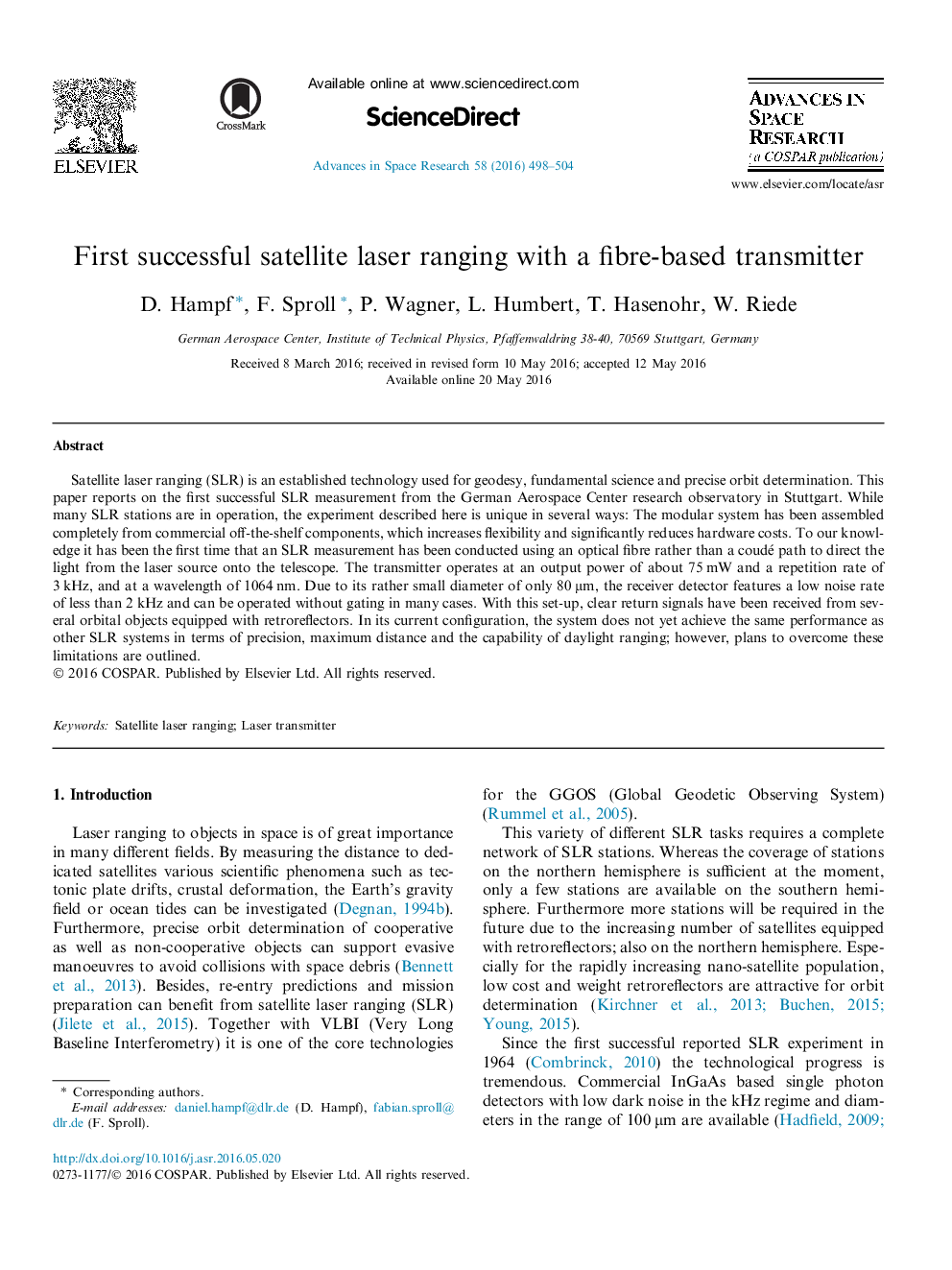| Article ID | Journal | Published Year | Pages | File Type |
|---|---|---|---|---|
| 1763261 | Advances in Space Research | 2016 | 7 Pages |
Satellite laser ranging (SLR) is an established technology used for geodesy, fundamental science and precise orbit determination. This paper reports on the first successful SLR measurement from the German Aerospace Center research observatory in Stuttgart. While many SLR stations are in operation, the experiment described here is unique in several ways: The modular system has been assembled completely from commercial off-the-shelf components, which increases flexibility and significantly reduces hardware costs. To our knowledge it has been the first time that an SLR measurement has been conducted using an optical fibre rather than a coudé path to direct the light from the laser source onto the telescope. The transmitter operates at an output power of about 75 mW and a repetition rate of 3 kHz, and at a wavelength of 1064 nm. Due to its rather small diameter of only 80 μm, the receiver detector features a low noise rate of less than 2 kHz and can be operated without gating in many cases. With this set-up, clear return signals have been received from several orbital objects equipped with retroreflectors. In its current configuration, the system does not yet achieve the same performance as other SLR systems in terms of precision, maximum distance and the capability of daylight ranging; however, plans to overcome these limitations are outlined.
